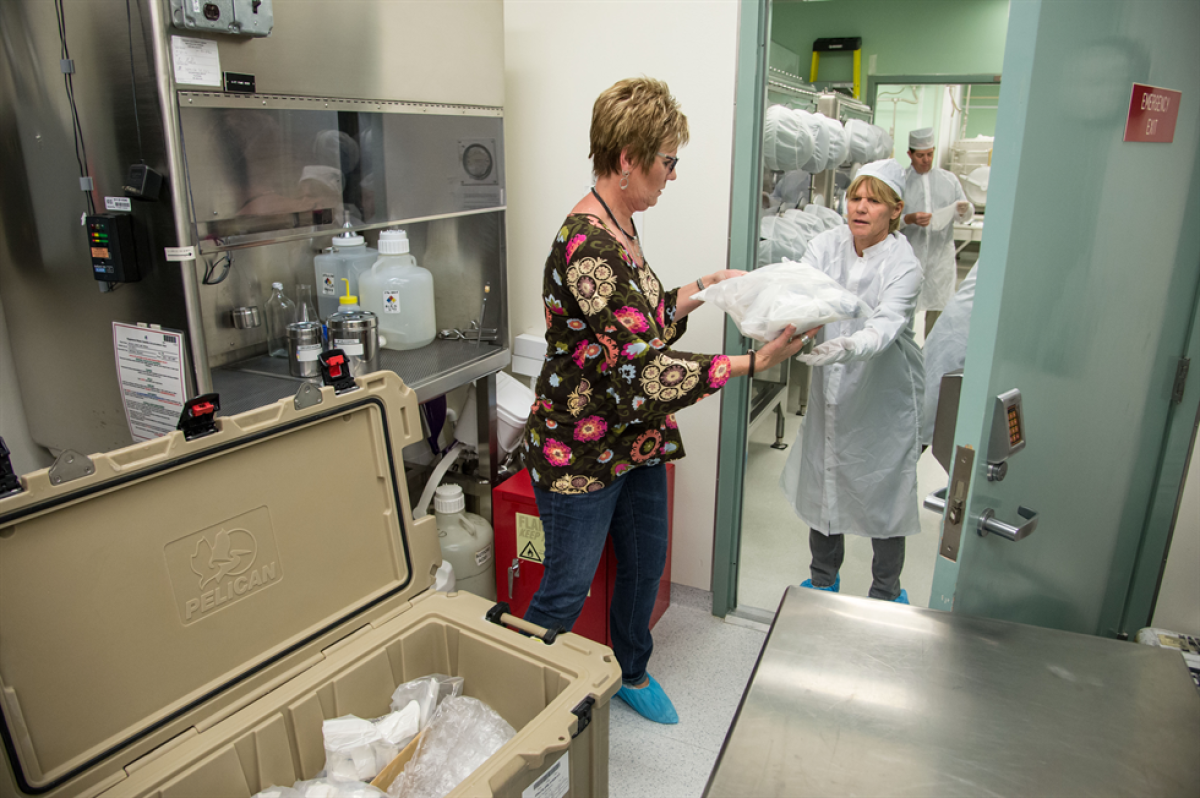It's one thing to call a room clean—it's another to measure precisely how much gunk has snuck into that room. That's exactly what a team of NASA scientists did at one of the agency's clean rooms, which they use to study meteorites and moon rock samples.
The results, which the team presented at the 49th Lunar and Planetary Science Conference this week, could have important implications for how scientists look for alien life on other planets.
The "clean room" they checked, which is used to analyze meteorites collected in Antarctica, is certainly cleaner than any home or office. But the scientists still found a handful of tiny denizens when they swabbed the floor, table and the bench where meteorite analysis actually takes place. For the samples collected at that bench, they also identified what organisms they found.
Read more: Life in the Solar System Likely Exists and is More Common Than We Think
"It feels like using those cleansing pore strips and really looking into it to find out what dirty stuff are pulled out from my nose!," Queenie Chan, a planetary scientist at Open University in the U.K., told Newsweek in an email. Chan wasn't associated with this project, but her research also relies on chemically analyzing meteorites in clean room conditions.
Chan said she isn't surprised by the findings: "That's actually what I would expect them to find." Contamination is pretty inevitable even under strict protocols. This particular lab adheres to what's called ISO Class 6 standards, which sets limits on how many particles of certain sizes can be found in the air (Class 1 is the cleanest).
How much of a problem terrestrial contamination is depends on the size of the extraterrestrial sample scientists are trying to analyze. The smaller the sample, the greater the risk that contamination blocks out the chemicals scientists want to identify.
The clean room survey found a particularly large number of fungi, of the same general group of species as the mold that inspired the drug penicillin. In certain conditions, those fungi can produce a few flavors of amino acids—the building blocks of proteins—that are quite rare on Earth and are therefore often assumed to be extraterrestrial. The team is now checking their samples for those particular molecules.
Fortunately, scientists also have a few tricks for weeding out terrestrial contamination that should help them analyze new samples, Chan said. Those techniques could include identifying the precise chemical fingerprint of the elements that make up each compound.

While the lab used in this research deals with samples that were delivered to Earth, NASA is preparing for a wave of new samples fetched directly back from elsewhere in the solar system, eventually including Mars and a comet.
More immediately, the spacecraft OSIRIS-REx is due to arrive at an asteroid in August and bring a piece home to a new clean room being designed now at NASA's Johnson Space Center in Houston. "This piece of information is vital," Chan said of the new research in terms of that facility. "We need to control the contamination level."
Uncommon Knowledge
Newsweek is committed to challenging conventional wisdom and finding connections in the search for common ground.
Newsweek is committed to challenging conventional wisdom and finding connections in the search for common ground.
About the writer
Meghan Bartels is a science journalist based in New York City who covers the science happening on the surface of ... Read more
To read how Newsweek uses AI as a newsroom tool, Click here.








